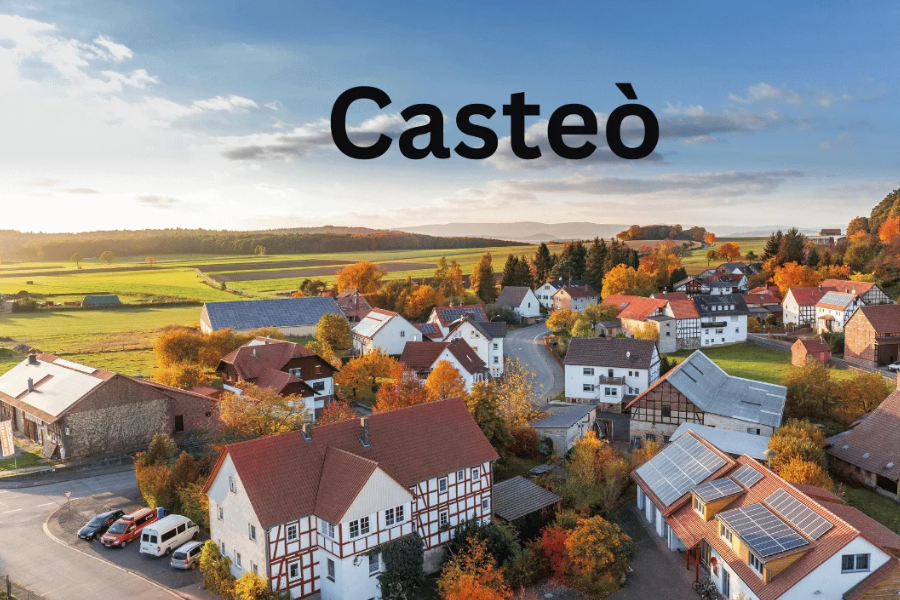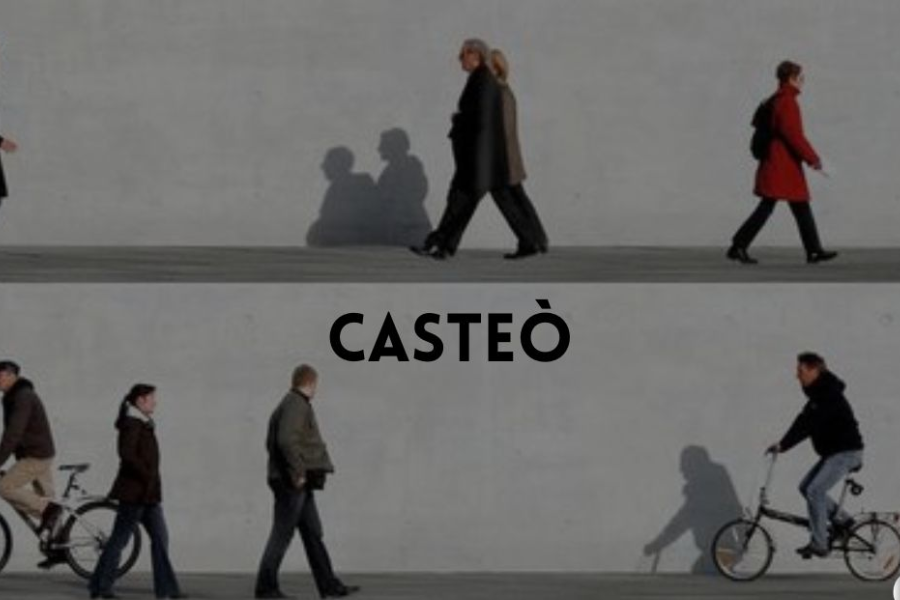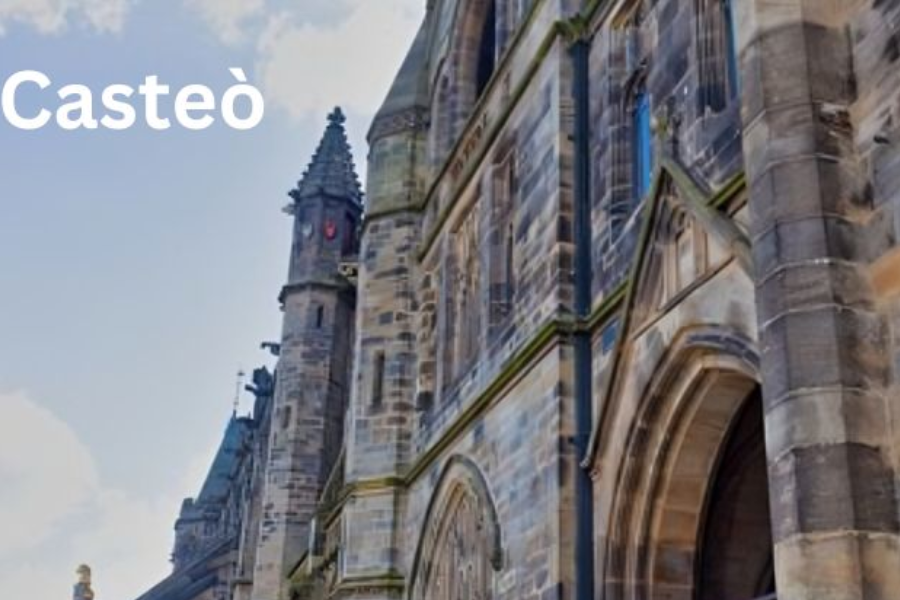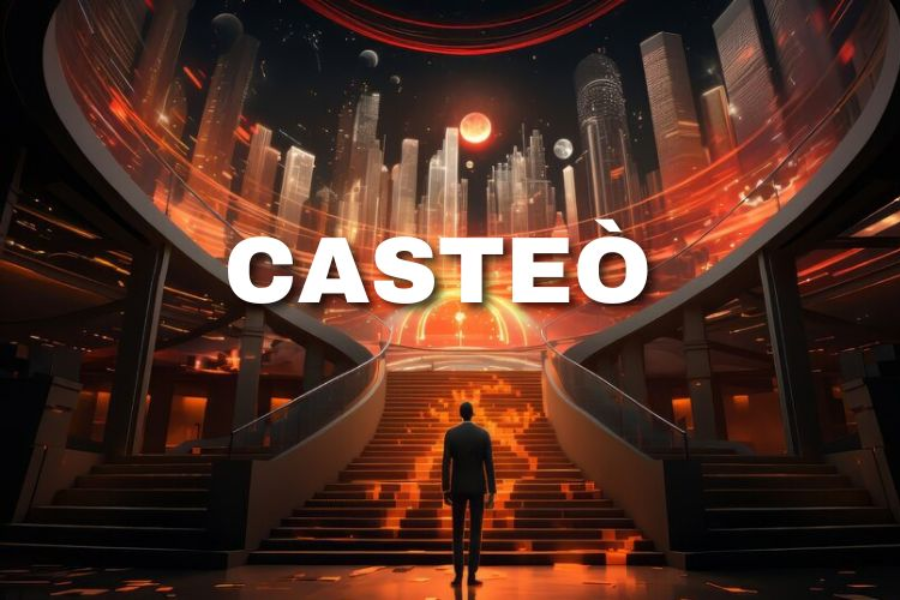Casteò, a term deeply embedded in the complex social structures of South Asia, continues to shape identities and influence social dynamics even in modern times. Although many societies have made significant progress in dismantling overt discrimination, the legacy of the caste system still lingers. This persistence raises important questions about how traditional identities intersect with contemporary notions of progress and equality.
In today’s world, where we strive for inclusivity and equal opportunities for all, the echoes of the caste system remind us of the long-standing historical influences that are hard to completely eradicate. The challenge lies in acknowledging and addressing these deep-rooted social divisions while fostering an environment where everyone can thrive, irrespective of their caste background.
Efforts to combat caste-based discrimination have led to various social reforms and legal measures aimed at promoting equality. However, the subtle and often unspoken influences of caste continue to manifest in various aspects of life, from education and employment opportunities to social interactions and marriage choices.
Understanding the impact of caste on modern society requires a nuanced approach that recognizes both the progress made and the ongoing challenges. It involves creating awareness, promoting dialogue, and implementing policies that address the underlying issues perpetuating caste-based discrimination.
In this context, it is crucial to reflect on how traditional identities can coexist with modern values of equality and justice. By doing so, we can work towards a more inclusive society that honors the diversity of its people while ensuring that no one is disadvantaged by the circumstances of their birth.
What Is Casteò?
Casteò, a term deeply embedded in the intricate social fabric of South Asia, continues to play a pivotal role in shaping identities and influencing social dynamics in contemporary times. Although many societies have made significant strides toward greater equality and inclusivity, the legacy of the caste system remains a complex and multifaceted lens through which we can examine humanity’s journey.
Historically, caste defined social hierarchies and determined one’s occupation, social interactions, and even marriage prospects. Despite legal reforms and social movements aimed at eradicating caste-based discrimination, its subtle influence still permeates various aspects of life. From the allocation of resources and opportunities to the way individuals perceive themselves and others, the remnants of the caste system continue to exert a powerful influence.
In the modern era, addressing the deep-rooted issues of caste involves more than just policy changes; it requires a cultural shift and a collective effort to foster genuine inclusivity. Educational initiatives, awareness campaigns, and community dialogues play crucial roles in challenging and changing long-held beliefs and prejudices.
Furthermore, the persistence of caste-based discrimination prompts us to question how traditional identities can coexist with contemporary values of fairness and justice. As we navigate this complex terrain, it is essential to recognize the progress made while remaining vigilant about the work that still needs to be done.
Understanding caste in the present day involves appreciating its historical context and its evolving nature in a rapidly changing world. By doing so, we can better address the challenges it poses and work towards a future where one’s potential is not limited by their social background. This journey towards true equality and inclusivity is ongoing, demanding constant reflection, action, and commitment from all of us.
The Allure Of Casteò
At its core, Casteò represents a complex mosaic of human societal structures that rigidly assign individuals their place within the community. This system dictates various aspects of life, from occupation and social roles to marriage prospects and personal interactions. It’s a concept that has been both revered for its deep historical roots and reviled for its role in perpetuating inequality.
The intricacies of Casteò are intriguing, reflecting a rich tapestry of traditions and cultural norms that have evolved over centuries. Despite efforts to promote equality and dismantle such hierarchical systems, the influence of caste remains pervasive in many forms across different cultures.
Casteò’s impact can be seen in the way communities organize themselves, often creating distinct social strata that influence people’s opportunities and social mobility. This rigid structure can lead to both cohesion within groups and division between them, highlighting the dual nature of caste as a source of identity and a barrier to progress.
Understanding Casteò requires a deep dive into its historical context and its ongoing relevance in contemporary society. It challenges us to consider how deeply ingrained social norms and traditions can shape our worldviews and affect the dynamics of modern life.
Efforts to address the challenges posed by caste systems involve not just policy changes but also a cultural shift towards greater inclusivity and respect for individual potential. Education, awareness, and open dialogue are key to breaking down the barriers imposed by caste and fostering a more equitable society.
By examining the multifaceted nature of Casteò, we can better appreciate the journey of humanity towards a future where one’s social standing is not predetermined by birth. This ongoing struggle for equality and justice is a testament to the resilience and capacity for change inherent in human societies.
The Rich History Of Casteò

Casteò’s rich history is a vibrant tapestry woven with ancient tales and cultural significance, inviting visitors to immerse themselves in its storied past. This unique place offers a journey through time, where every corner reveals a piece of its heritage. From ancient ruins that whisper secrets of bygone eras to trattorias that preserve age-old traditions, Casteò is a living museum of history and culture.
Exploring Casteò means walking along its charming cobblestone streets, where the past and present seamlessly blend. Each step uncovers stories embedded in the architecture, the local customs, and the very air you breathe. The ancient ruins stand as silent witnesses to centuries of history, offering a tangible connection to a world that, while long gone, remains vibrantly alive through the town’s enduring spirit.
Visitors are invited to delve into Casteò’s past by engaging with its well-preserved traditions. Whether it’s savoring a meal at a trattoria that has been serving local delicacies for generations or participating in cultural festivals that have stood the test of time, there are countless ways to experience the essence of this extraordinary place.
Casteò captivates with its blend of historical charm and dynamic community life. Each building and street tells a story, creating a rich mosaic of this enchanting destination. Explore Casteò’s heritage, where history is felt and experienced at every turn. Discover a place where the past is always present, offering a timeless charm and a deeper understanding with every visit.
Unique Architectural Features Of Casteò
Casteò’s architecture is a harmonious blend of history and innovation, captivating visitors with its intricate details and timeless beauty. This enchanting destination invites exploration, with each corner revealing a piece of its storied past. From the cobblestone streets to traditional trattorias, Casteò offers a rich tapestry of ancient tales and cultural significance waiting to be uncovered.
As you delve into Casteò’s heritage, you’ll discover treasures that offer a glimpse into a world both ancient and vibrantly alive today. The town’s architecture weaves a compelling narrative of past and present, drawing visitors into a realm where history seamlessly meets modernity. Every building, every street corner exudes a sense of timeless beauty and intricate design, inviting admiration and exploration.
Wandering through Casteò, you’ll encounter grand palazzos and charming alleyways, each architectural marvel telling a unique chapter of the town’s rich history. These structures blend tradition with contemporary elements, creating a stunning visual tapestry that delights and inspires.
The cobblestone streets, lined with centuries-old buildings, transport you back in time, while the innovative designs embedded in newer constructions reflect Casteò’s dynamic evolution. Traditional trattorias serve as cultural touchstones, offering a taste of local heritage through authentic cuisine and warm hospitality.
Casteò’s architecture is more than just a collection of buildings; it is a living, breathing testament to the town’s enduring legacy. Each structure, with its intricate details and historical significance, contributes to the overall story of a place where the past is always present.
Explore Casteò and let its architectural wonders guide you through a journey of discovery. Here, every façade and every pathway holds a story, inviting you to experience the magic of a place where history and innovation coexist in perfect harmony. Discover the essence of Casteò, where timeless beauty and cultural richness create an unforgettable tapestry of wonder and exploration.
People And Culture Of Casteò

The vibrant people and culture of Casteò are a testament to its rich history and distinctive architecture. This unique blend of tradition and modernity is embraced by the residents, who warmly welcome visitors into their community. From colorful festivals to bustling marketplaces, Casteò’s culture radiates hospitality, warmth, and a zest for life.
Immersing yourself in Casteò means experiencing its daily rhythms and centuries-old traditions firsthand. The enchanting stories of a bygone era come to life as you explore the town, where beauty and craftsmanship intertwine in every detail. Discover intricately designed facades and hidden courtyards, each with its own piece of history embedded in the cobblestone streets.
The architecture of Casteò whispers tales of a vibrant past, urging exploration and admiration. Every building and street corner is a chapter in the town’s rich narrative, inviting you to delve deeper into its heritage. The facades are not just visually stunning but also tell stories of the artisans who crafted them, blending functionality with aesthetic appeal.
In Casteò, tradition meets modernity in a vibrant blend of history and contemporary life. Festivals burst with color, marketplaces buzz with activity, and every corner holds a story. Explore the town’s rich culture and architecture, where the past and present coexist harmoniously. Experience the essence of Casteò—a celebration of life and heritage where every visit offers a new discovery.
Types Of Casteò Systems
Hereditary Caste System: In this framework, an individual’s social status is determined by birth, offering little to no opportunity for mobility between castes. People inherit their caste status from their parents and are expected to adhere to the customs and restrictions associated with it throughout their lives.
Occupational Caste System: This system is based on the division of labor, where each caste is linked to specific occupations or trades. It not only dictates one’s profession but also influences social interactions, marriages, and religious practices.
In a Hereditary Caste System, your societal position is predetermined by your birth, with minimal chances for moving between castes. Your caste status is inherited from your parents, and you are expected to follow the traditions and limitations that come with it throughout your life.
The Occupational Caste System, on the other hand, revolves around the division of labor. Each caste is associated with particular jobs or trades, which shape not only your career but also your social relationships, marital choices, and religious practices. This system tightly links one’s profession to their caste, influencing many aspects of daily life.
Social Implications Of Casteò
Discrimination: Structural discrimination takes various forms, such as social exclusion, economic marginalization, and violence. Individuals from lower social strata often encounter prejudice and unequal treatment when it comes to accessing education, healthcare, and employment opportunities.
Social Segregation: The caste system perpetuates social stratification, creating hierarchies of privilege and disadvantage. Those belonging to higher castes enjoy greater societal status, economic resources, and political influence, while those in lower castes face systemic discrimination and limited upward mobility.
Preserving Heritage, Embracing The Future

Cultural Identity in a Globalized World: The ongoing debate about how to balance the challenges of globalization with the preservation of cultural identity finds a poignant symbol in casteò. The resilience of its people and the enduring importance of their heritage are evident in its essence, which encapsulates the struggle to uphold tradition while engaging with global influences.
Innovation and Social Dynamics: The evolution of civilizations and their ability to adapt can be seen through the interplay of tradition and innovation within Casteò, reflecting broader societal changes. This highlights the importance of safeguarding cultural heritage even as society evolves, ensuring that future generations can learn from both the successes and failures of the past.
Navigating Modernity And Tradition
Embracing Technological Advancements: At the heart of Casteò lies a compelling narrative of progress and preservation, where tradition and technology converge. Here, technological advancements are not seen as a threat to cultural heritage but rather as an opportunity to enhance the sharing of knowledge and safeguard traditions of the past. Casteò exemplifies how technology can play a vital role in preserving cultural identity by digitizing historical documents and employing innovative techniques in architectural restoration.
Legal Frameworks and Policy Innovations: New legal frameworks are emerging to address the unique challenges faced by Casteò, a society at the crossroads of history and modernity. These initiatives, rooted in respect for Casteò’s legacy and values, aim to preserve cultural treasures, promote social equity, and stimulate economic growth. By enacting forward-thinking laws, Casteò sets an example for other regions seeking to honor their heritage while forging a sustainable future.
Cultural Adaptation and Global Influence: Casteò’s cultural adaptation and global impact are defining features of its transition into the contemporary era. The cultural richness of Casteò has garnered international attention, sparking interest and admiration worldwide as our world becomes increasingly interconnected. Casteò’s global presence not only amplifies its cultural influence but also sparks conversations about how to maintain cultural diversity in an era of globalization.
Cultural Preservation And Innovation
Architectural Conservation and Renewal: Casteò places great emphasis on conserving its architectural heritage, striving to protect historic buildings while integrating them into the modern urban landscape. These efforts not only preserve tangible reminders of Casteò’s past but also breathe new life into these structures, allowing them to meet contemporary needs while retaining their historical charm.
Arts, Crafts, and the Creative Economy: A vibrant arts and crafts scene is integral to Casteò’s efforts in cultural preservation. The village fosters a creative economy that supports artisans and craftsmen, who blend traditional techniques with modern materials and methods. This fusion of old and new ensures that Casteò’s cultural legacy thrives, benefiting both the local community and the global audience.
Education and Cultural Transmission: Casteò’s enduring impact stems from its commitment to education and the transmission of cultural knowledge. To safeguard the diverse cultural heritage of Casteò for future generations, museums, workshops, and educational programs serve as platforms for passing down information and skills from older to younger generations. This dedication to learning equips people in the region to face the challenges of modern life with confidence and creativity, while also safeguarding the history of the area.
How Can Casteò Help You?
Casteò offers a unique path to personal growth by nurturing both the physical and spiritual dimensions of individuals. Through practices like meditation, visualization, and energy work, Casteò empowers individuals to connect with their inner strength and unlock their full potential. By harmonizing the mind, body, and spirit, Casteò equips individuals to overcome obstacles, build resilience, and manifest their aspirations. To experience the transformative journey of Casteò, plan a visit today.
Benefits Of Embracing Casteò
- Boost Confidence: Building a strong sense of self-esteem and self-worth.
- Improve Relationships: Nurturing empathy and deeper understanding in connections with others.
- Enhance Well-being: Supporting overall health and wellness, encompassing physical, emotional, and mental aspects.
- Overcome Fears: Confronting and conquering self-limiting beliefs to unlock personal growth.
- Attract Abundance: Aligning with the flow of universal energy to attract success and seize opportunities.
Unlocking Your Potential With Casteò
To tap into your potential with Casteò, embark on a journey of self-discovery and personal growth. Begin by setting clear intentions and goals for what you want to achieve. Visualize your desired outcomes to ignite your motivation and drive. Cultivate inner peace and clarity through mindfulness and meditation practices. Embrace challenges as opportunities for learning and development. By incorporating these techniques into your daily routine, you can unlock your innate abilities and create a life filled with fulfillment and success.
Steps To Unlock Your Potential
- Establish Clear Intentions: Clarify your objectives and what you aim to accomplish.
- Envision Success: Create a mental picture of your aspirations and desired outcomes.
- Embrace Mindfulness: Integrate meditation and mindfulness practices into your everyday life.
- Welcome Challenges: See obstacles as chances to learn and develop.
- Regularly Reflect: Assess your advancement and modify your goals accordingly.
The Many Facets Of Casteò
Navigating the Maze: Casteò and Social Structures
The most evident form of Casteò lies in society’s layering, creating hierarchies where roles are predetermined, and upward mobility often feels unattainable. How do these structures persist, and how have they endured the upheavals of social reform and revolution?
The Fabric of Identity: Casteò and Cultural Significance
It’s more than just social status; Casteò is deeply intertwined with cultural identity, rituals, and traditions. For many, it serves as a connection to their heritage, while for others, it acts as a constraint tied to outdated customs. We delve into the dual nature of cultural identity under the shadow of Caste.
The Currents of Transformation: Casteò and the Onslaught of Modernity
In an era defined by constant change, Casteò faces challenges from all fronts. Globalization, technological progress, and evolving norms confront its traditional stronghold. How does Casteò respond—adapt, resist, or evolve—in this dynamic landscape?
FAQs:
Q. What Is Casteò?
Casteò refers to a system of social stratification deeply rooted in the complex social structures of South Asia. It determines individuals’ societal standing based on their birth and dictates various aspects of life, including occupation, social interactions, and marriage prospects.
Q. How does caste influence modern society?
Despite efforts to promote equality and dismantle caste-based discrimination, the legacy of the caste system persists in influencing social dynamics, access to opportunities, and perceptions of individuals. It continues to shape identities and raises questions about the intersection of traditional identity and progress in contemporary society.
Q. What efforts are being made to combat caste-based discrimination?
Various social reforms and legal measures have been implemented to promote equality and address caste-based discrimination. However, the subtle influences of caste continue to manifest in different aspects of life, necessitating ongoing efforts to raise awareness, promote dialogue, and implement policies aimed at addressing underlying issues.
Q. How can traditional identities coexist with modern values?
Achieving a balance between traditional identities and modern values involves fostering a cultural shift toward greater inclusivity and respect for individual potential. Education, awareness campaigns, and open dialogue play crucial roles in challenging long-held beliefs and prejudices while promoting equality and justice.
Conclusion
Casteò, deeply entrenched in the social fabric of South Asia, continues to shape identities and influence social dynamics in the modern era. Despite progress in dismantling overt discrimination, the legacy of the caste system persists, raising important questions about the intersection of traditional identity and progress.
Efforts to combat caste-based discrimination have led to various social reforms and legal measures aimed at promoting equality. However, the subtle influences of caste continue to manifest in various aspects of life, necessitating ongoing efforts to address underlying issues.
Understanding the impact of caste on modern society requires a nuanced approach that recognizes both the progress made and the ongoing challenges. By fostering awareness, promoting dialogue, and implementing policies that address the underlying issues perpetuating caste-based discrimination, societies can work towards a future where traditional identities coexist with modern values of equality and justice.

